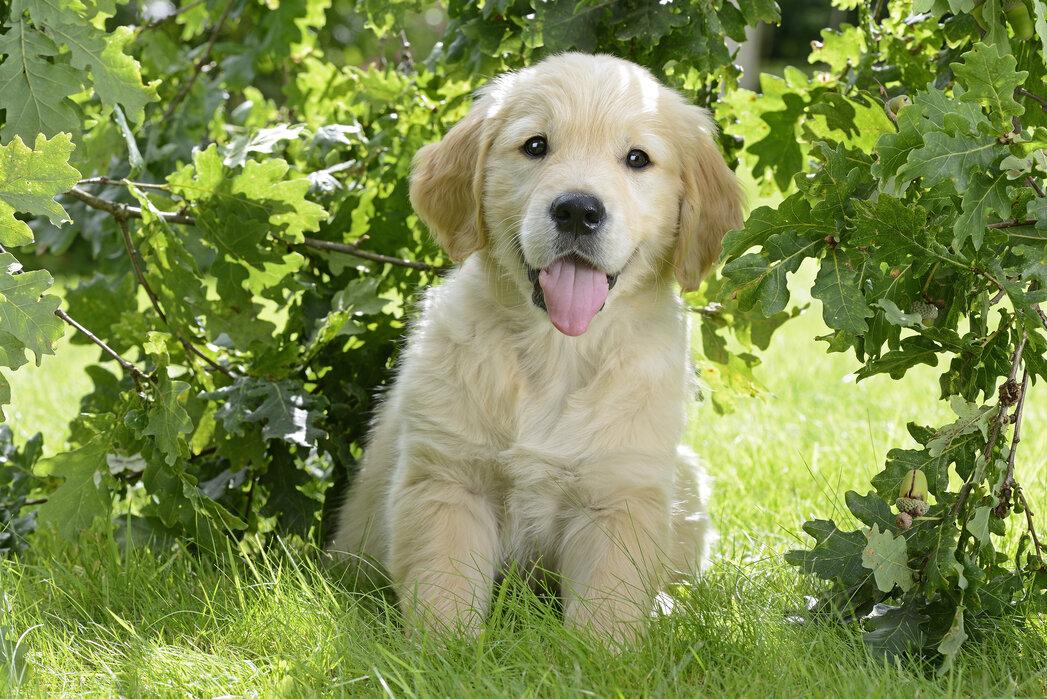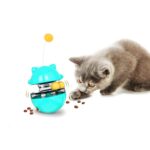Bringing a Golden Retriever puppy into your home is like welcoming a bundle of joy that’s ready to fill your days with energy, laughter, and unconditional love. As a new pet parent, one of the most crucial aspects of ensuring your furry friend grows into a healthy and happy adult is understanding their nutritional needs. With their playful spirit and boundless enthusiasm, Golden Retriever puppies require a well-balanced diet tailored to their unique developmental stages. But how do you navigate the sea of puppy food options and feeding schedules?
In this comprehensive feeding guide, we’ll break down everything you need to know about how much to feed your Golden Retriever puppy, helping you make informed choices that support their growth and wellbeing. Discover the right portion sizes, feeding frequencies, and tips to keep mealtime enjoyable for your pup, ensuring they thrive every step of the way.
Table of Contents
- Understanding Nutritional Needs of Golden Retriever Puppies
- Portion Control: Finding the Right Amount for Growth
- Choosing the Best Food Options for Your Puppy
- Establishing a Feeding Schedule for Healthy Development
- Q&A
- In Retrospect
Understanding Nutritional Needs of Golden Retriever Puppies
Golden Retriever puppies have unique nutritional requirements that play a crucial role in their overall growth and development. As they are large breed puppies, they need a balanced diet that supports their rapid growth without causing developmental issues such as hip dysplasia. Key components of their diet should include:
- High-quality protein: Essential for muscle development, protein should make up a significant portion of their food.
- Fat: Healthy fats provide energy and support healthy skin and coat.
- Calcium and phosphorus: Important for bone development, these minerals must be carefully balanced.
- Vitamins and minerals: A range of nutrients is necessary for a well-functioning immune system and overall health.
When determining portion sizes, consider the puppy’s age, weight, and activity level. It’s also important to choose a high-quality puppy food specifically formulated for large breeds. To assist with portion control, a feeding chart can be helpful. Below is a simple guide to daily feeding amounts based on age and weight:
| Age (Months) | Weight (lbs) | Daily Food Amount (cups) |
|---|---|---|
| 2-3 | 10-20 | 1-1.5 |
| 4-5 | 20-40 | 1.5-2.5 |
| 6-8 | 40-60 | 2.5-3.5 |
| 9-12 | 60-80 | 3-4 |
Portion Control: Finding the Right Amount for Growth
Feeding your Golden Retriever puppy the right amount is crucial for its growth and overall health. Understanding portion control can help prevent overfeeding, which may lead to obesity, and underfeeding, which can stunt development. The key is to base portion sizes on a combination of factors, including age, weight, activity level, and the specific nutritional needs of your puppy. Generally, Golden Retriever puppies require a diet that is higher in protein and fat compared to adult dogs, as these nutrients support their rapid growth and energy levels.
To simplify feeding times, consider following these guidelines:
- Age: Puppies have different needs at various stages of development; adjust portions accordingly.
- Weight: Regularly monitor your puppy’s weight to ensure they are maintained within a healthy range.
- Activity Level: More active puppies may require slightly larger portions to sustain their energy.
Utilizing a feeding chart can also be beneficial. Below is a simple guide to help you determine appropriate portion sizes:
| Age (Months) | Daily Food Amount (Cups) |
|---|---|
| 8-12 | 2-3 |
| 4-6 | 1-2 |
| 6-8 | 1.5-2.5 |
By closely monitoring your puppy’s growth and adjusting food intake as necessary, you’ll set the stage for a strong and healthy adult dog. Remember, portion control is a shared responsibility to ensure your Golden Retriever thrives during its formative years.
Choosing the Best Food Options for Your Puppy
When selecting the right food for your Golden Retriever puppy, it’s essential to prioritize their health and growth. Look for high-quality puppy food that has been specifically formulated for large breeds. Key ingredients to consider include:
- Whole meats: such as chicken, lamb, or fish as the primary ingredient.
- Healthy fats: like omega-3 and omega-6 fatty acids to support their skin and coat health.
- Whole grains: such as brown rice or oatmeal for energy and digestive health.
- Fruits and vegetables: to provide essential vitamins, minerals, and antioxidants.
It’s also advisable to check for AAFCO (Association of American Feed Control Officials) approval on packaging, ensuring the food meets nutritional standards. To help you make an informed choice, here’s a simple guide comparing the benefits of various commercial puppy food types:
| Food Type | Benefits |
|---|---|
| Dry kibble | Convenient, promotes dental health, and often more affordable. |
| Wet food | More palatable, hydrating, and often richer in protein. |
| Raw diet | Whole-food approach, promotes natural behavior, but requires careful handling. |
| Homemade meals | Customized nutrition, but demands more effort and knowledge. |
Establishing a Feeding Schedule for Healthy Development
Establishing a consistent feeding schedule is crucial for your golden retriever puppy’s growth and overall well-being. Puppies thrive on routine, which not only helps regulate their digestion but also fosters good behavior and a sense of security. Aim to feed your puppy three to four times a day during their early months. This frequent feeding pattern ensures they receive adequate nutrients to support their rapid development. As they approach six months, you can begin transitioning to two meals a day, which can continue into adulthood.
When planning the feeding schedule, consider the following key points:
- Consistent Timing: Try to feed your puppy at the same times each day.
- Proper Portion Sizes: Consult your vet for tailored advice on how much food to offer based on your puppy’s age, weight, and activity level.
- Monitoring Weight: Regularly check your pup’s weight to adjust portions as needed to avoid obesity.
| Age (Months) | Meals Per Day | Approx. Daily Intake (Cups) |
|---|---|---|
| 2-3 | 4 | 1-2 |
| 4-6 | 3 | 2-3 |
| 6-12 | 2 | 3-4 |
Q&A
Q&A: How Much to Feed Your Golden Retriever Puppy – A Comprehensive Guide
Q1: Why is it essential to know how much to feed my Golden Retriever puppy?
A1: Understanding the appropriate feeding amounts for your puppy is crucial for their growth and development. Overfeeding can lead to obesity and associated health issues, while underfeeding can hinder their growth and lead to nutritional deficiencies. Establishing a balanced diet ensures that your puppy receives the proper nutrients needed for strong bones, healthy fur, and overall vitality.
Q2: What factors should I consider when determining how much to feed my Golden Retriever puppy?
A2: Several key factors influence your puppy’s dietary needs: age, weight, activity level, and health status. Puppies typically have higher energy requirements than adult dogs, so it’s essential to account for their growth rate and energy expenditures when formulating their meals. Consulting with your veterinarian can help tailor a plan that suits your puppy’s unique needs.
Q3: How often should I feed my Golden Retriever puppy?
A3: Golden Retriever puppies thrive on a schedule. Typically, they should be fed three to four times a day until they’re about six months old. As they grow, you can transition to two meals a day. This regular feeding schedule helps regulate their metabolism and maintain consistent energy levels throughout the day.
Q4: Are there specific types of food that I should consider for my puppy?
A4: When selecting food, look for high-quality puppy formulations that meet the nutritional guidelines established by the Association of American Feed Control Officials (AAFCO). Ingredients should include a good balance of proteins, fats, carbohydrates, vitamins, and minerals. Puppy-specific formulas are designed to support growth and development, so always opt for those over adult dog food.
Q5: How do I calculate the right portion size for my Golden Retriever puppy?
A5: Most dog food packages provide feeding guidelines based on the puppy’s weight and age. Start by weighing your puppy and using the chart as a reference point. Adjust portions based on their appetite and body condition—if they appear too thin or are gaining weight too quickly, consult your veterinarian for adjustments.
Q6: What signs should I look for to know if I’m feeding my puppy the right amount?
A6: A healthy Golden Retriever puppy should have a visible waist when viewed from above, a slight abdominal tuck when viewed from the side, and should not have ribs that are easily visible or overly pronounced. Regular vet check-ups can help monitor their growth and confirm that they are on the right track.
Q7: Can I use treats in my Golden Retriever puppy’s diet?
A7: Yes, treats can be a fantastic way to reinforce training and provide mental stimulation. However, they should only make up about 10% of your puppy’s daily caloric intake. Be sure to choose healthy, age-appropriate treats to avoid unnecessary weight gain.
Q8: When should I transition my puppy to adult food?
A8: Generally, Golden Retrievers can transition to adult food around 12 months of age. However, consult with your veterinarian to evaluate your puppy’s growth and development to determine the right time for this transition.
Q9: What should I do if my puppy refuses to eat?
A9: If your Golden Retriever puppy is refusing food, first check for any signs of illness or discomfort. Puppies can be picky, so try varying food textures or flavors. If the refusal persists for more than a day or two, consult your veterinarian to rule out potential health issues.
Q10: Any final tips for feeding my Golden Retriever puppy?
A10: Stick to a consistent feeding schedule, monitor their body condition, and always provide fresh water. Regularly revisit their dietary needs as they grow, and involve your veterinarian in any major dietary changes. With a balanced approach, you’ll set your Golden Retriever puppy on the path to a healthy, happy life!
In Retrospect
As you embark on the journey of nurturing your Golden Retriever puppy, remember that proper nutrition lays the foundation for a healthy, happy life. By understanding their unique feeding needs and adjusting as they grow, you not only support their physical development but also strengthen the bond you share. Your puppy’s diet is a crucial puzzle piece in the grand picture of their well-being. So, whether it’s measuring out kibble or indulging in the occasional treat, your thoughtful approach will guide them into a vibrant adulthood. As you navigate this exciting chapter, keep an open heart and an attentive eye—your Golden companion is ready to thrive with your care!
















